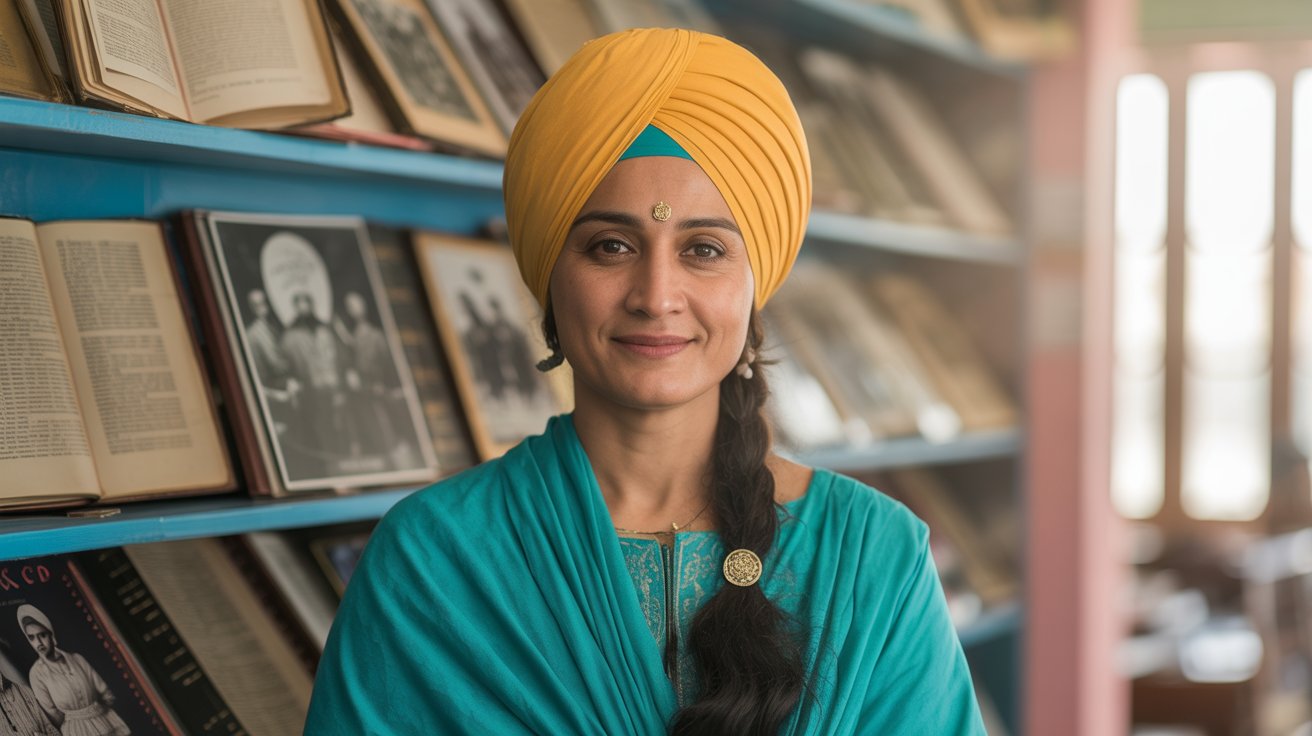The following serves as a concise introduction to the subject at hand
Sikh women are a shining example of resilience, courage and devotion. The Sikh women carry history, spirituality and a vision for progress. How much do we know about the journey of these women? Sikh women, from the time of the Gurus up to the present day, have played more than just supportive roles. They have also been warriors, educators, change-makers, and leaders.
Imagine that a river flows silently, but it shapes everything it touches. Sikh women have, like a river, shaped the community they live in and those beyond it with grace and dedication. Let’s look closer at the identity of Sikh women, their roles, their struggles and their contributions throughout history.
These are the spiritual roots of Sikh women.
Sikhism’s very foundation is based on equality. Guru Nanak, the founder of Sikhism, declared that both men and women were equal before God. Sikh women have been viewed as beings of spirituality capable of leadership, devotion and service. Sikhs have opened up the doors to gurdwaras and scriptures to women as well, unlike many other traditions.
The Historical Role of the Gurus
Sikh women have been active in the shaping of the religion since its earliest beginnings. Mata Khivi is remembered as the wife of Guru Angad for her service in organising communal meals, a practice that has continued worldwide. Mata Gujri was the grandmother of the 10th Guru’s boys, and she guided them in times of conflict with great strength. The examples above show that Sikh females were more than just supportive. They also had vision and maintained Sikh values.
The Sikh teachings on equality

The famous Guru Nanak words, “Why do you call her inferior when she is the mother of kings?”, still ring true today. Sikhism empowers women in their leadership roles, allowing them to take the lead on prayer, community service and devotional singing. Women can contribute to practices like langar (a communal meal), kirtan, and seva.
Courage during Conflict
Sikh women are remembered in history as being warriors. Many Sikh women suffered torture and were martyred during the Mughal regime. Mai Bhago is a brave warrior who led 40 Sikhs to battle. She embodies the spirit of courage. These sacrifices show us how Sikh women are protectors of family and religion.
Role of Sikh women in family and community
Women are at the core of Sikh homes. Women are the foundation of Sikh households. They pass on traditions and values to future generations, and they ensure cultural identity is maintained. They are also active outside the home, in gurdwaras and charity, as well as in community leadership. Their ability to balance home life and their public lives reflects resilience.
Education and Social Reform
Sikh women made a significant contribution to the reform of education during and after colonialism. Sikh women established schools, encouraged literacy and encouraged girls’ education. Sikh Women’s Federation and other organisations fought for the rights of women, opening the door to progress. They showed how education was not only about the books, but also about the empowerment of minds and communities.
Modern Sikh Women leaders and politicians
Sikh women are in positions of influence today, from local councils all the way up to international platforms. Sikh politicians, activists, and lawyers are influencing the discussion on justice, equality and representation. Global leaders like Harjitkaur Sandhu and other Sikh women in politics remind us of the respect that Sikh female voices enjoy on the international stage.
Global Sikh Diaspora & Women’s Impact

Women carried Sikh values and identity across national borders as Sikh communities spread across the globe. Sikh women are at the forefront of building Sikh communities in Canada, the UK, the US and Australia. They also promote cultural exchange and establish gurdwaras. The Sikh women bridge the divide between modernity and tradition, adapting their faith to different cultures while keeping it alive.
Challenges Sikh Women Face Today
Even though Sikh women have a rich tradition of equality, there are still challenges. Many Sikh women are still affected by issues such as gender stereotypes, lack of representation in the leadership and limited participation. Others are under pressure to reconcile modern expectations with tradition. They are a reflection of the struggle women face around the world to be fully recognised for who they truly are.
Breaking Stereotypes & Myths
Sikh women are often subjected to stereotypes in Western society, particularly when their identities may be misunderstood. Sometimes, wearing turbans and traditional clothing can make them vulnerable to discrimination. Part of the empowerment process is to dispel these myths. Sikh women are changing the way people see them through education, media and storytelling.
Sikh Women in Arts, Literature, and Media
Sikh women are creative in all fields. Writers, musicians and filmmakers explore themes of migration, identity and resilience. They challenge old views and provide fresh perspectives, making their art an effective tool to express oneself and promote social change.
Empowerment and equality

Tradition and progress are both important for the future of Sikh women. The empowerment of women is not only in the policies, but also in daily actions, such as supporting girls’ education and encouraging them to assume leadership positions, or challenging stereotypical ideas. The efforts made today, like seeds in fertile ground, will lead to a better tomorrow.
FAQs
1. What was the name of the first Sikh woman to make history?
Mata Khivi is remembered as the wife of Guru Angad, who organised the langar, a Sikh tradition that has become a cornerstone.
2. Do Sikh women fight in battles or wars?
Mai Bhago, for example, led Sikh warriors to battle. This proves that Sikh women are active protectors of their faith.
3. What is the role of Sikh women in Gurdwaras
The community leaders are involved in prayer, kirtan and langar. They also hold leadership positions.
4. Does Sikh doctrine promote equality of gender?
Sikhism, from its beginnings, emphasises equal rights for men and women.
5. What are the challenges facing Sikh women today?
In diaspora, they face gender stereotypes and cultural stereotyping, as well as the need to balance tradition and modern roles.
Conclusion
Sikh women embody strength, hope, and history. While they continue to overcome challenges, Sikh women embody courage, compassion, and equality. It is important to remember that their story does not only concern the past, but also the future and present of many communities. It is more than just a gesture of respect to acknowledge their contribution. This is an important step in building a society that is balanced and equitable.










